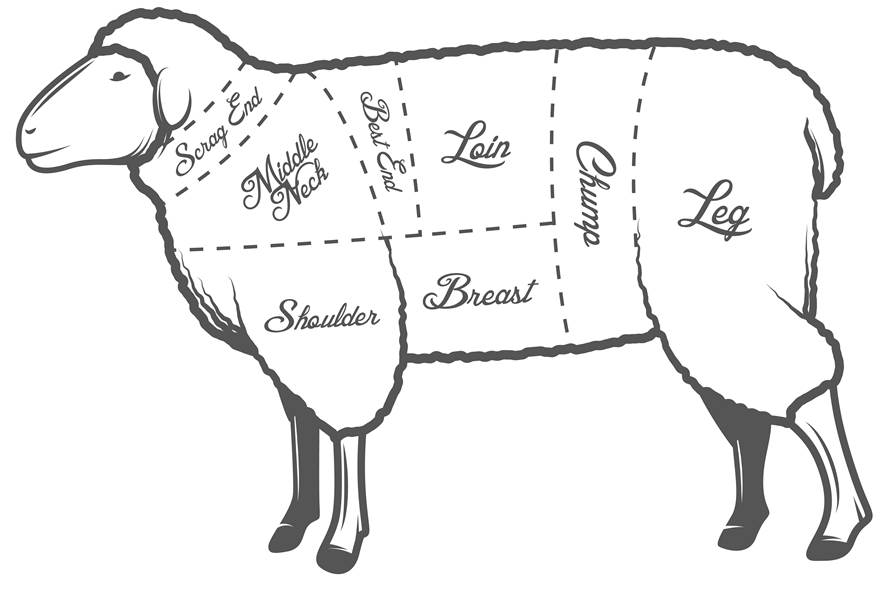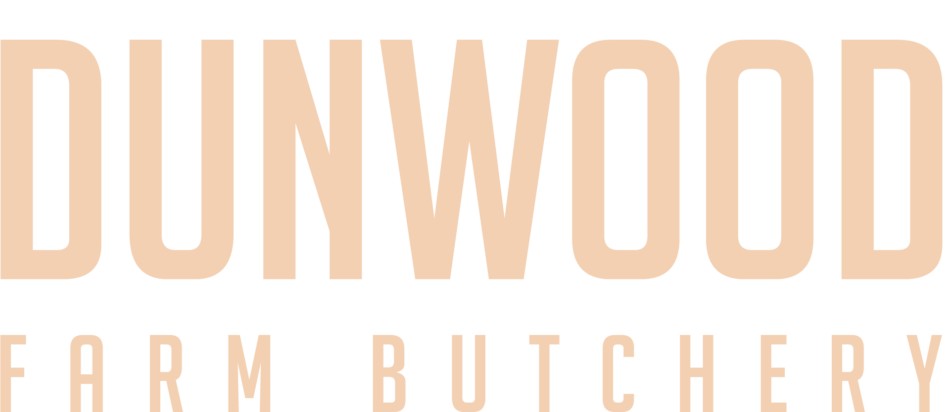The Basics
English lamb is available all year round, but you’ll find the spring born lambs available in July to November at their most tender. From November to Easter you’ll find winter lamb available, which will usually provide slightly larger cuts with more flavour, and will be slightly less tender. Easter lamb is likely to have been produced from lambs born around Christmas specifically for this trade; these will be sweet and tender, but don’t forget that hoggets (lambs just over a year old) will be available now, which have a deeper flavour. Hogget meat will have a deeper, darker colour than Easter lamb. Mutton comes from an animal which is at least two years old, and due to this age it has a stronger, gamey like flavour.
Lamb butchery is rather more straight forwards than beef, but nevertheless the different cuts of lamb are all suited to differing cooking techniques, which our cuts guide below explains.
The Cuts
Neck/Scrag
Lamb from here is ideal for stews or casseroles, left on the bone. This can be removed from the bone for lamb stew or mincing.
Shoulder
The shoulder of lamb has an incredible flavour and succulence for slow roasting on the bone, or braising. The bone can be removed which presents the opportunity for stuffing; think Moroccan and add dried fruit to your stuffing, it really works well with lamb shoulder. Also great for diced stew and mince.

Best End
The best end produces 14 cutlets (7 per side), and it is also where you’ll find your rack of lamb. The lamb from here is best served pink.
Breast
The breast is reasonably fatty, and requires slow cooking in liquid. The breast can be left on the bone, or boned and rolled, which makes it great for stuffing.
Loin
The loin can be sold as loin chops, either single or double (Barnsley) or as a roasting joint. It’s a very tender cut of lamb for quick roasting, and serving pink.
Chump
The chump can be cut for chump chops, which are a good sized chop for grilling or frying, cut for boneless steaks, served as a roasting joint, or left as part of the leg.
Leg
The leg is the cut that most people will think of when they think of roast lamb, and deservedly so. Whilst it can’t quite rival the flavour of the shoulder, it is still highly flavoursome, and wonderfully diverse for cooking. It can be cooked on the bone either pink, or slow cooked until the bone pulls away, or with the bone removed it makes a tender easy cut roast or leg steaks.
At the base of the leg you’ll find the shank which is sometimes removed from the leg, but often left attached. If sold individually it will be on the bone, and requires low, slow cooking in plenty of liquid; ideal for an economical Irish Stew.
